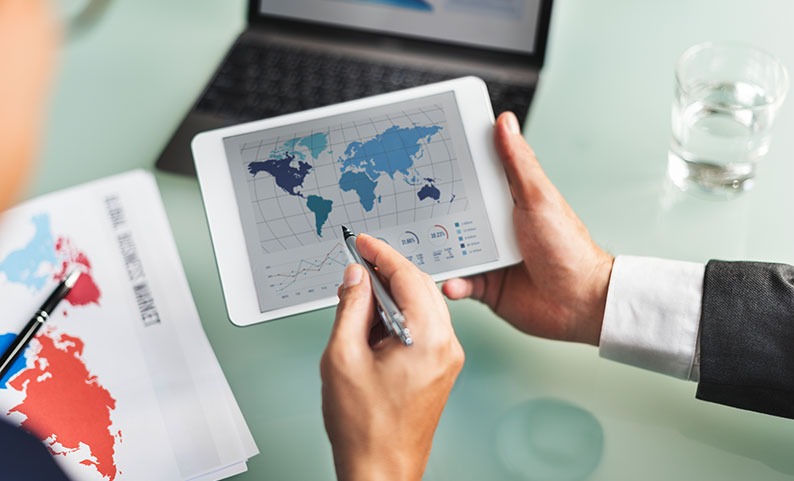
Where possibilities
begin
Gain new perspectives for your digital transformation. You can follow the blogs on this page to get latest information.
Mapping the Merger: Analysing the Ripple Effect of Global Trade on M&A Volumes

Few metrics in the complex dance of global economics reveal more about market confidence and strategic vision than merger and acquisition (M&A) activity. The correlation between global trade flows and M&A volumes has never been more significant — or intriguing — as we traverse the intricate economic terrain of 2025.
The Trade-M&A Nexus: More Than Meets the Eye
M&A activity usually rises in tandem with the removal of trade barriers and the expansion of cross-border trade. This correlation reflects a complex interaction of market forces and is not just coincidental.
Think about the post-pandemic period. As trade patterns and supply chains changed significantly, businesses did more than simply adjust; they strategically repositioned themselves through acquisitions. Businesses that had previously placed a higher priority on global efficiency switched to models that placed more emphasis on resilience and regional self-sufficiency.
“In uncertain times, companies don’t just retreat—they recalibrate,” explains Teresa Chen, Global Head of M&A at Atlantic Partners. “The massive wave of regionalization we’ve witnessed isn’t about abandoning globalization entirely, but rather about creating redundancy and resilience through strategic acquisitions.”
Beyond the Numbers: The Human Element
Behind every merger statistic lies a human story—of leadership vision, organizational culture, and strategic adaptation. When Japan’s Mizuho Financial Group acquired several regional American banks last quarter, media headlines focused on the $8.3 billion price tag. What received less attention was how this move represented Mizuho’s strategic response to shifting trade regulations in the Pacific Rim.
This human dimension of M&A activity reflects something fundamental: companies are ultimately collections of people responding to changing market conditions. When trade relationships evolve, organizational structures follow suit—sometimes gradually, sometimes through bold acquisitions.
The Sectoral Shift: Winners and Losers
Trade fluctuations impact industries asymmetrically, creating clear patterns in M&A volume across sectors:
Technology & Digital Services: With fewer physical supply chain dependencies, this sector has maintained robust M&A activity even amid trade tensions. Cross-border digital service acquisitions increased 27% year-over-year, even as physical goods trade faced headwinds.
Manufacturing: Perhaps the most sensitive to trade dynamics, this sector has witnessed significant consolidation within regional trade blocs. North American manufacturing M&A activity has risen 18% since new regional content requirements took effect.
Financial Services: As trade flows redirect, financial services firms have aggressively pursued acquisitions that strengthen their positions in emerging trade corridors. We’ve seen particular activity along developing South-South trade routes.
The Geographic Dimension: New Patterns Emerge
The geography of M&A has shifted dramatically in response to evolving trade relationships. Beyond the headline-grabbing mega-deals, we’re witnessing fascinating patterns:
- Intra-Regional Consolidation: As regional trade agreements strengthen, companies are increasingly looking next door for acquisition targets.
- Strategic Footholds: Organizations are acquiring smaller players in strategic markets to establish presence in emerging trade zones.
- Supply Chain Security: Vertical integration through M&A has become a popular strategy to insulate against trade disruptions.
Looking Forward: Navigating the New Normal
What does this mean for business leaders and investors watching the M&A space?
First, understand that M&A activity isn’t merely reactive to trade conditions—it’s increasingly used as a proactive strategy to position for anticipated trade developments. Companies aren’t waiting for new trade agreements to be finalized; they’re positioning through acquisitions based on expected outcomes.
Second, recognize that successful post-merger integration now requires deeper cultural and regulatory expertise. As trade relationships grow more complex, so do the challenges of bringing together organizations across borders.
Finally, watch for the leading indicators. Changes in trade policy often precede shifts in M&A activity by 12-18 months. Today’s diplomatic discussions may well foreshadow tomorrow’s merger announcements.
The Bottom Line
The relationship between global trade and M&A volumes offers a revealing window into how organizations navigate economic complexity. Beyond the spreadsheets and legal documents lies a fundamentally human story—of adaptation, strategic vision, and organizational evolution.
For those looking to understand where markets are heading, few indicators tell us more than the ongoing conversation between international trade flows and merger activity. In this dialogue between policy and corporate strategy, we can discern not just where the global economy has been, but where it’s going next.
Latest Posts




GST 2.0 – Can Your Company Handle the Compliance Rush Without a VDR?
September 05, 2025
